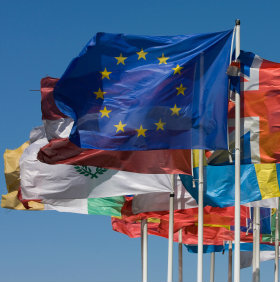Eurobites: EU forces device makers to boost cybersecurity
Also in today's EMEA regional roundup: Sweden's Enea lands US traffic classification deal; Net Insight synchronizes 5G; why data center architecture rocks.

Also in today's EMEA regional roundup: Sweden's Enea lands US traffic classification deal; Net Insight synchronizes 5G; why data center architecture rocks.
The European Commission has adopted a new Radio Equipment Directive that it hopes will make wireless devices less vulnerable to getting hacked and thus compromising their owners' privacy and security. The "delegated act," as it is called in Commission parlance, is intended to force manufacturers of such devices to build in increased cybersecurity through a three-pronged approach that will see improved network resilience, better protection of consumers' privacy and a reduced risk of monetary fraud. The new measure will come into force following a mandatory two-month scrutiny period, provided the powers that be in Brussels and Strasbourg do not raise any objections.
Sweden's Enea has landed a US$3.1 million data traffic classification deal with an unnamed US-based computing and virtualization technology vendor. The four-year contract is an extension of an existing deal involving Enea's Qosmos ixEngine software. The mystery vendor will embed Qosmos ixEngine both in its firewall and SD-WAN offerings, providing traffic intelligence used for cybersecurity, WAN optimization and quality of service.
Another Swedish outfit, Net Insight, has signed a collaboration agreement with Turkish operator Türk Telekom worth 220 million Swedish kronor ($25.6 million). This is a significant deal for the vendor as it relates to 5G synchronization; the company's usual patch is video-related software. According to Net Insight, its software offers "unique advantages" as it is independent of GPS and can provide time synchronization over existing networks.
Ericsson, TDC Net and Shape Robotics have been participating in a fascinating project in Denmark, which enables a teenager stuck at home with a serious lung condition to participate fully in the school day using a small robot connected to his PC and tablet. Rasmus Dalsten, from the town of Herlev, has full control of the robot, and can interact remotely with his classmates in the school yard as well as in the classroom. "I've got a new robot that I can turn around myself and it's no trouble for the adults or myself. It is very nice," says Rasmus, charmingly. Figure 1:
 Rasmus Dalsten communes with a classmate via his 5G-controlled robot.
Rasmus Dalsten communes with a classmate via his 5G-controlled robot.Data center architecture? It's just servers in a shed, right? Think again. A new exhibition opens in London this week examining the architecture of data centers, until now a largely unconsidered topic. These slightly sinister facilities are often hidden in plain sight and yet, according to one of the show's curators, Tom Ravenscroft, they are "the most interesting and important new building typology in a generation" with all sorts of implications for the future of cities. The show, Power House: The Architecture of Data Centres, runs from November 3 until February 28, at the Roca London Gallery. Figure 2:
 A shed less ordinary: The Belvedere Data Centre in London doesn't hide away.
A shed less ordinary: The Belvedere Data Centre in London doesn't hide away.
(Source: Belvedere Data Centre, London; photo by Scott Brownrigg)— Paul Rainford, Assistant Editor, Europe, Light Reading
Read more about:
EuropeAbout the Author(s)
You May Also Like











